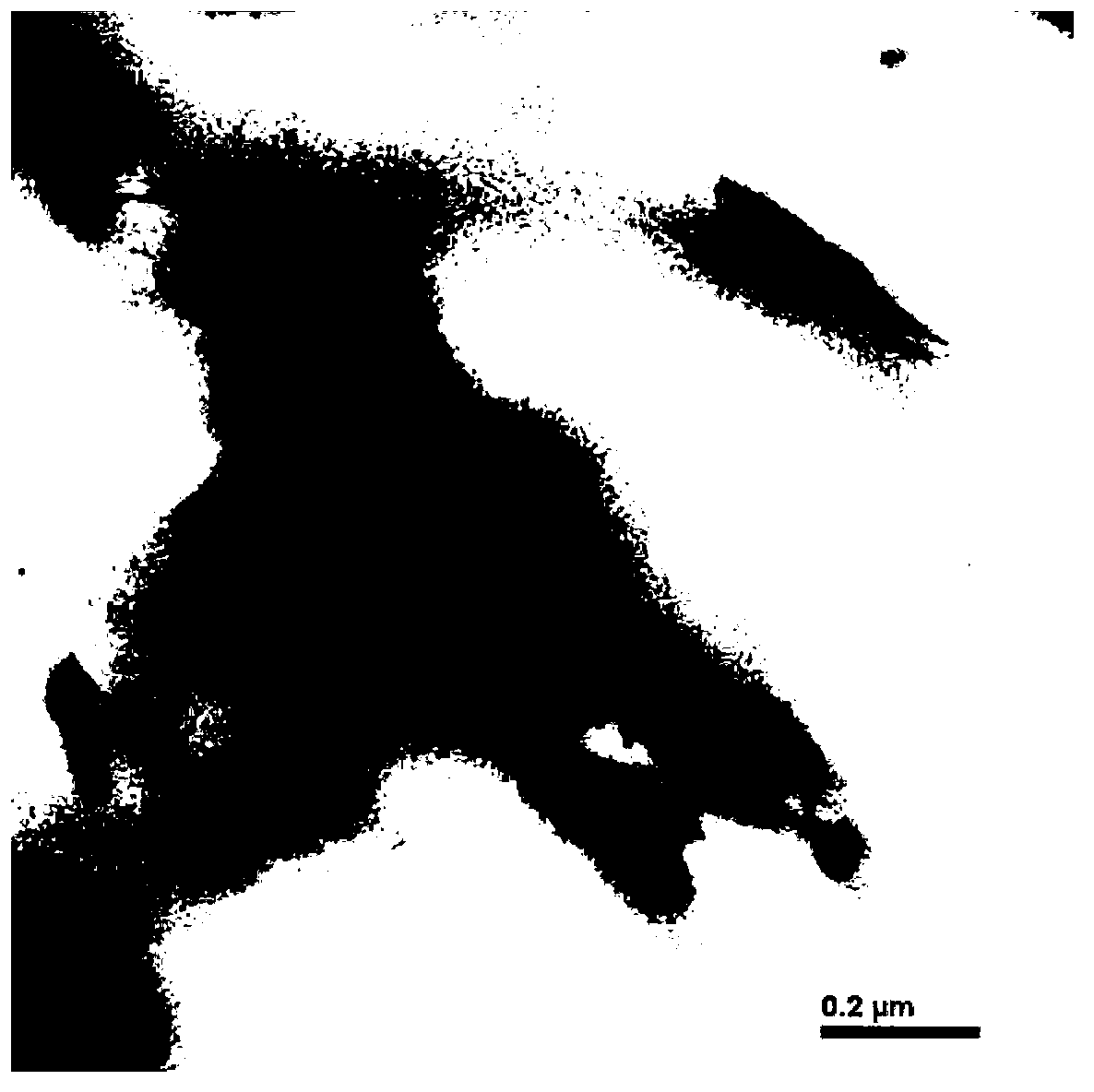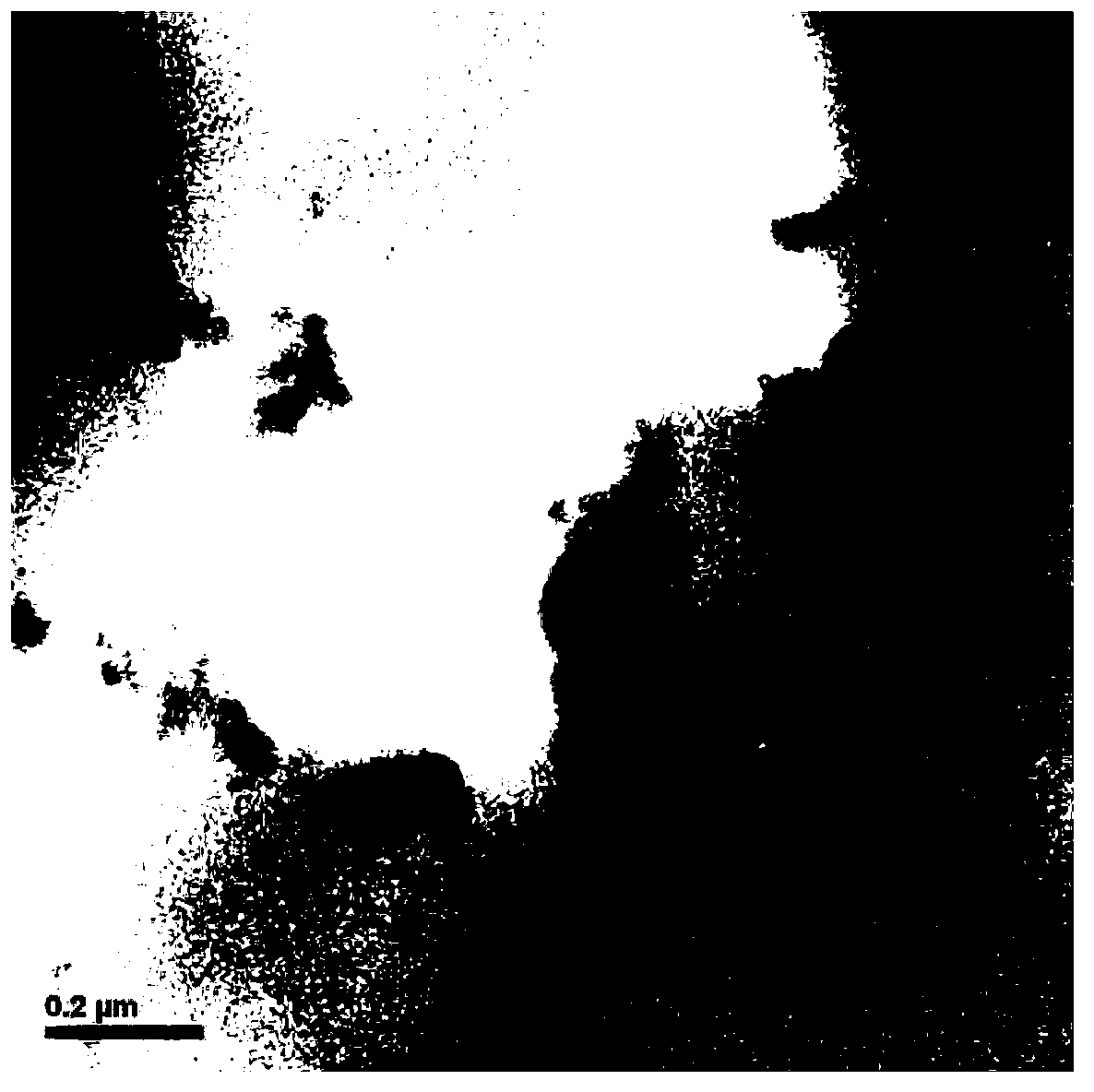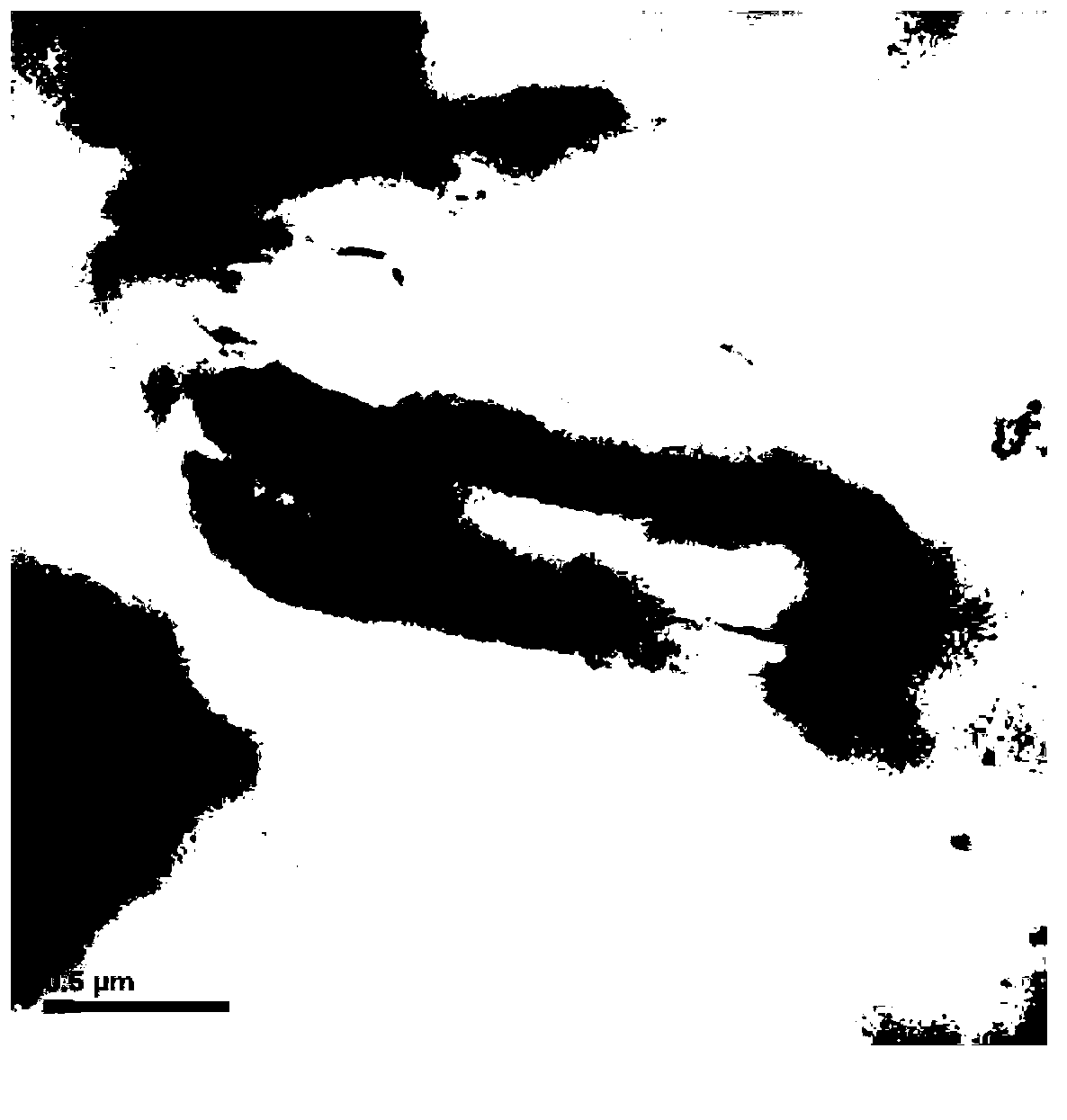Nano-reinforced wood-plastic composite and preparation method thereof
A wood-plastic composite material and nano-reinforcement technology, which is applied in the field of nano-reinforced wood-plastic composite material and its preparation, can solve the problems of poor compatibility between wood fiber and plastic interface, difficulty in improving the quality of composite materials, and unfavorable uniform dispersion of wood fiber. Achieve the effect of increasing compatibility, improving mechanical properties and good dimensional stability
- Summary
- Abstract
- Description
- Claims
- Application Information
AI Technical Summary
Problems solved by technology
Method used
Image
Examples
Embodiment 1
[0044] This example uses the weight ratio of raw materials as follows:
[0045]
[0046] Above-mentioned modified wood flour is prepared according to the following steps:
[0047] 1) Cut the wood waste into 10-20cm long and 0.05-0.1cm thick wood chips, put them into a hydrothermal reaction kettle (the mass ratio of wood waste to water is 1:5), and heat at 140°C for 1 hour;
[0048] 2) Soak the treated wood in a NaOH solution with a pH of 10 to neutralize the organic acid produced;
[0049] 3) The wood is washed with water, dried at 70° C. for 48 hours, pulverized, and then dried at 105° C. for 2 hours to obtain modified wood powder.
[0050]Add all the above-mentioned raw materials into a high-speed mixer, mix at 75°C for 10 minutes, and then add them to a twin-screw extruder to extrude and pelletize. ℃, zone 3, 4 and 5: 175°C, machine head: 175°C. The wood-plastic composite particles are hot-pressed at a temperature of 175°C and a pressure of 20Mpa. The transmission el...
Embodiment 2
[0052] This example uses the weight ratio of raw materials as follows:
[0053]
[0054]
[0055] Above-mentioned modified wood flour is prepared according to the following steps:
[0056] 1) Cut the wood waste into 10-20cm long and 0.05-0.1cm thick wood chips, put them into a hydrothermal reaction kettle (the mass ratio of wood waste to water is 1:6), and heat at 155°C for 1 hour;
[0057] 2) Soak the treated wood in a NaOH solution with a pH of 9 to neutralize the organic acid produced;
[0058] 3) The wood is washed with water, dried at 70° C. for 48 hours, pulverized, and then dried at 105° C. for 2 hours to obtain modified wood powder.
[0059] Add all the above-mentioned raw materials into a high-speed mixer, mix at 80°C for 10 minutes, and then add them to a twin-screw extruder to extrude and pelletize. ℃, zone 3, 4, 5: 180°C, machine head: 180°C. The wood-plastic composite particles are hot-pressed at a temperature of 175°C and a pressure of 20Mpa. The transm...
Embodiment 3
[0061] This example uses the weight ratio of raw materials as follows:
[0062]
[0063] Above-mentioned modified wood flour is prepared according to the following steps:
[0064] 1) Cut the wood waste into 10-20cm long and 0.05-0.1cm thick wood chips, put them into a hydrothermal reaction kettle (the mass ratio of wood waste to water is 1:4), and heat at 155°C for 1 hour;
[0065] 2) Soak the treated wood in a NaOH solution with a pH of 10 to neutralize the organic acid produced;
[0066] 3) The wood is washed with water, dried at 70° C. for 48 hours, pulverized, and then dried at 105° C. for 2 hours to obtain modified wood powder.
[0067] Put all the above-mentioned raw materials into a high-speed mixer, mix at 70°C for 15 minutes, and then add them to a twin-screw extruder to extrude and granulate. ℃, zone 3, 4 and 5: 175°C, machine head: 175°C. The wood-plastic composite particles are hot-pressed at a temperature of 175°C and a pressure of 20Mpa. The properties of ...
PUM
| Property | Measurement | Unit |
|---|---|---|
| Bending strength | aaaaa | aaaaa |
| Tensile strength | aaaaa | aaaaa |
Abstract
Description
Claims
Application Information
 Login to View More
Login to View More - R&D
- Intellectual Property
- Life Sciences
- Materials
- Tech Scout
- Unparalleled Data Quality
- Higher Quality Content
- 60% Fewer Hallucinations
Browse by: Latest US Patents, China's latest patents, Technical Efficacy Thesaurus, Application Domain, Technology Topic, Popular Technical Reports.
© 2025 PatSnap. All rights reserved.Legal|Privacy policy|Modern Slavery Act Transparency Statement|Sitemap|About US| Contact US: help@patsnap.com



